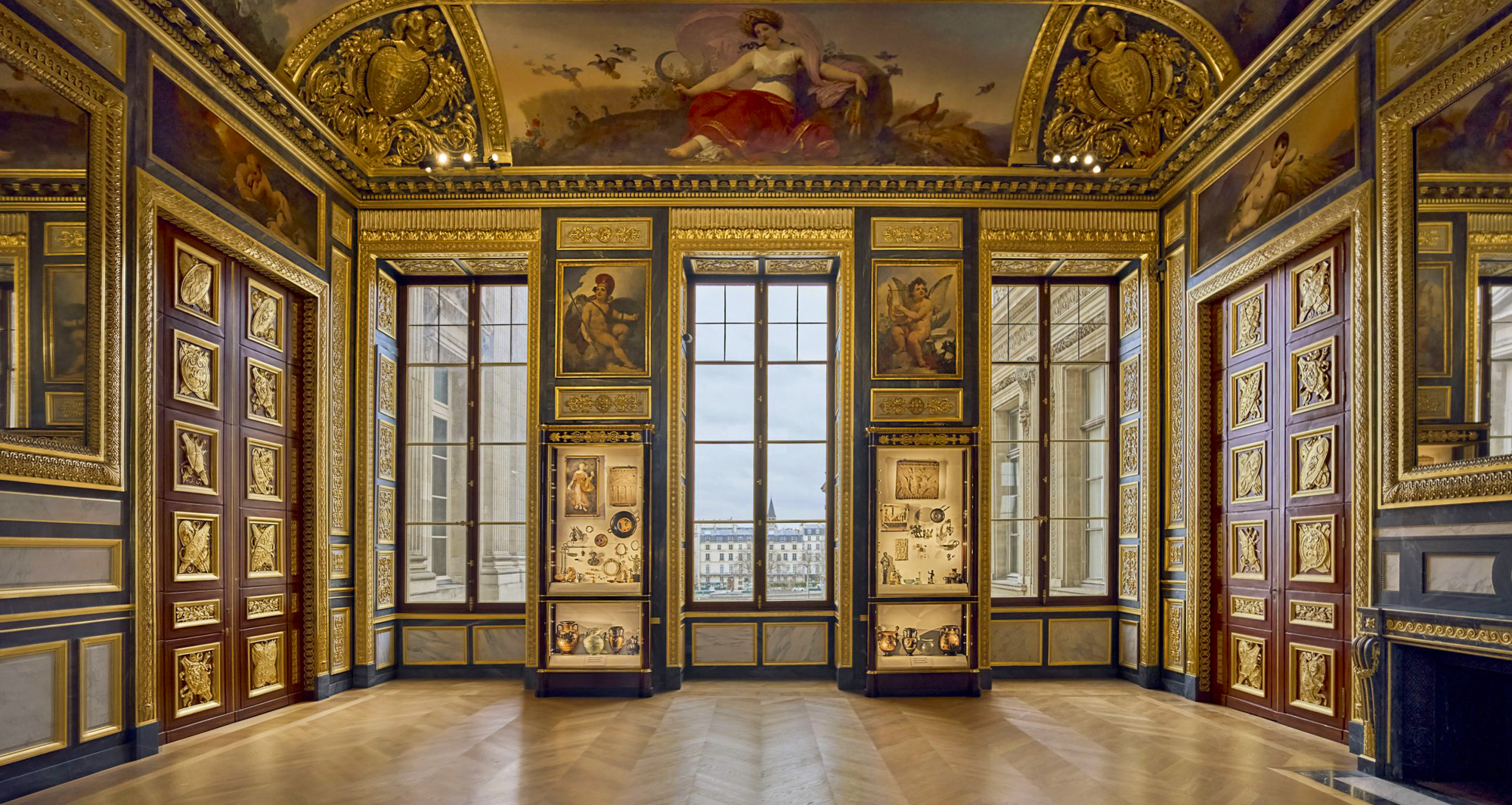
Vacheron Constantin e il Louvre
“The Journey of Life”, a Venezia una importante vetrina sull’arte del restauro. La nuova collaborazione artistica e culturale in occasione della terza Biennale Homo Faber
Generazioni di maestri orologiai si sono alternate nei quasi 270 anni di attività caricando di conoscenze e di ricercatezza stilistica la più antica Manifattura orologiera al mondo di quel prezioso patrimonio che oggi vede Vacheron Constantin e il Louvre – istituzioni coeve fondate nel XVIII secolo – uniti nel prosieguo di una collaborazione artistica iniziata nel 2019 nel segno della passione e del rispetto nei confronti dell’arte e della cultura. L’occasione è la terza edizione della Biennale Homo Faber (1 – 30 settembre 2024), una celebrazione dell’artigianalità contemporanea a Venezia (a cura di Michelangelo Foundation For Creativity & Craftsmanship, no profit che sostiene gli artigiani al fine di promuovere un futuro più sostenibile, inclusivo e umano), in corso a Venezia presso la Fondazione Giorgio Cini (sull’Isola di San Giorgio Maggiore a Venezia). Il tema è “The Journey of Life” per questa vetrina sull’arte del restauro con la direzione artistica di Luca Guadagnino e Nicolò Rosmarini.
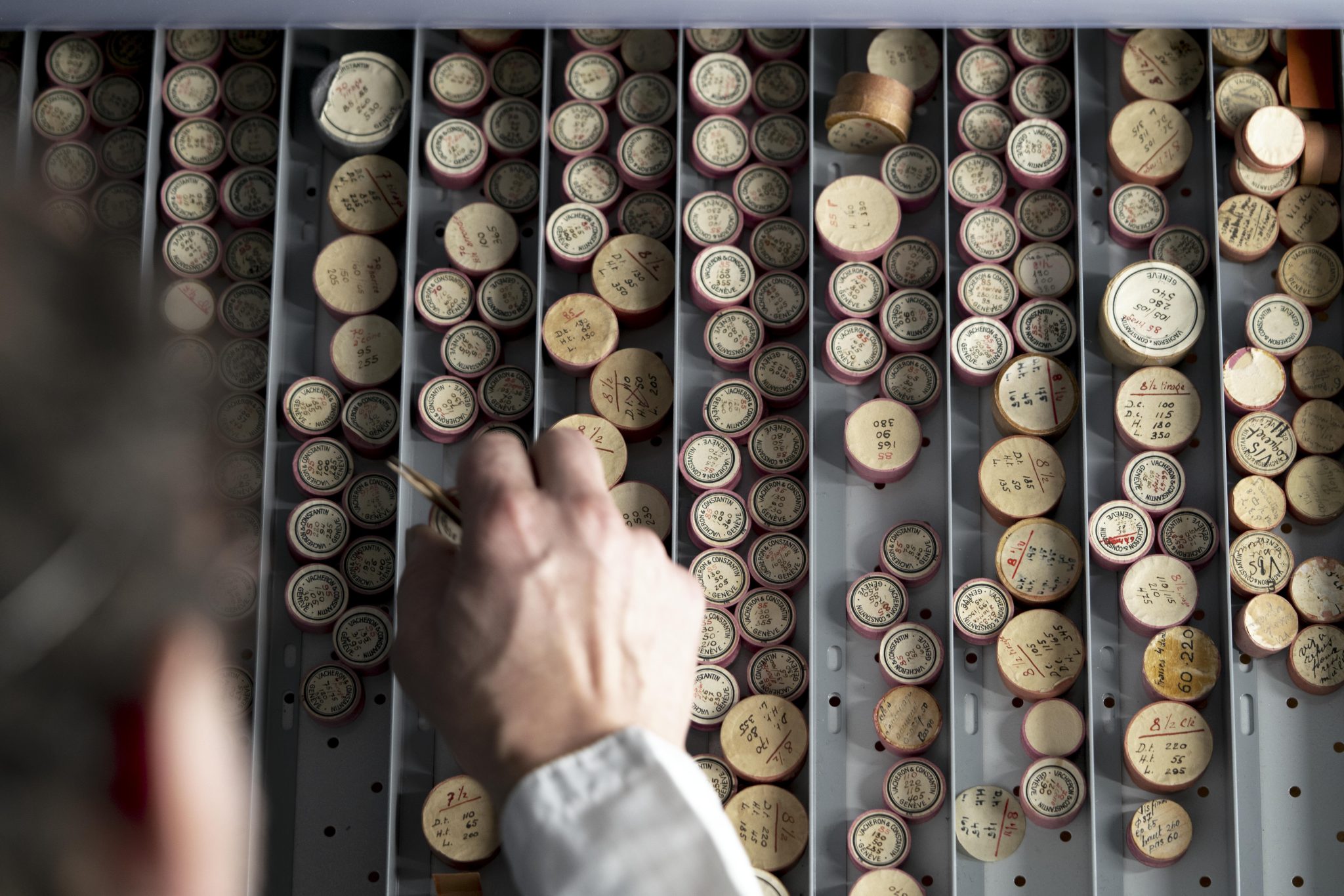
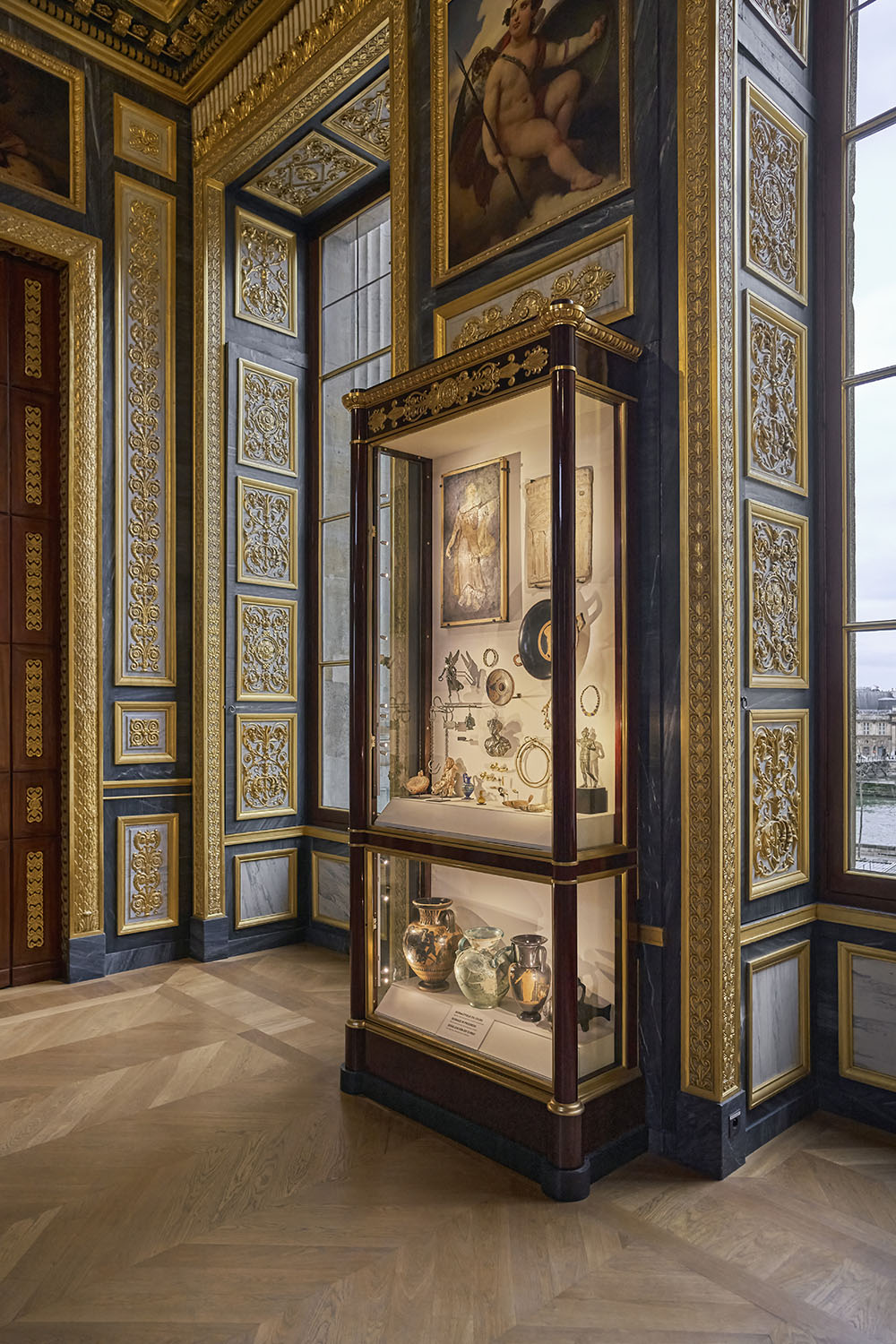
I restauratori del laboratorio di ebanisteria del Museo del Louvre presentano il lavoro effettuato su una teca in legno di rovere con impiallacciatura di mogano e decorazione appliqué in bronzo dorato del 1822, realizzata dal famoso ebanista Jacob-Desmalter destinata ai gioielli reali e agli oggetti da collezione appartenuti a Maria Antonietta, nella Sala dei Gioielli del Louvre. Saranno affiancati dagli orologiai Vacheron Constantin che illustrano il lavoro di restauro degli orologi d’epoca. La postazione e le vetrine espositive presentano segnatempo della collezione privata di Vacheron Constantin, come l’orologio gioiello Lady Kalla del 1985, un orologio da tasca del 1908 e tre orologi Historiques American 1921, tra cui un modello unico riproposto nel 2021 creato con utensili e tecniche orologiere d’epoca.
Giacché Vacheron Constantin crea orologi in grado di attraversare i secoli, nutre un profondo rispetto per l’arte del restauro impegnandosi a preservare tutti i segnatempo prodotti sin dalle origini nel 1755, anche quelli più datati – per assicurare che i modelli restaurati conservino le caratteristiche originali attinge all’ampia scorta di componenti originali che, in caso di esaurimento, saranno riprodotti dagli orologiai dei laboratori di restauro utilizzando le macchine d’epoca, secondo le schede tecniche storiche (piani, diagrammi e istruzioni d’uso) conservate negli archivi del dipartimento Heritage, custode di ogni singola creazione di Vacheron Constantin.
Prima degli orologi al polso, le donne preferivano quelli a pendente, un esempio è l’orologio gioiello del 1908 con cassa guilloché intarsiata con decori in platino e impreziosita dallo smalto verde acqua traslucido, applicato con la tecnica flinqué, e da diamanti taglio rosa. Sormontata da un arco in oro giallo, questa composizione è decorata secondo l’estetica Art Nouveau che prediligeva motivi di ispirazione naturalistica. Il quadrante argentato presenta un centro con cifre arabe nere e minuteria “chemin de fer”.
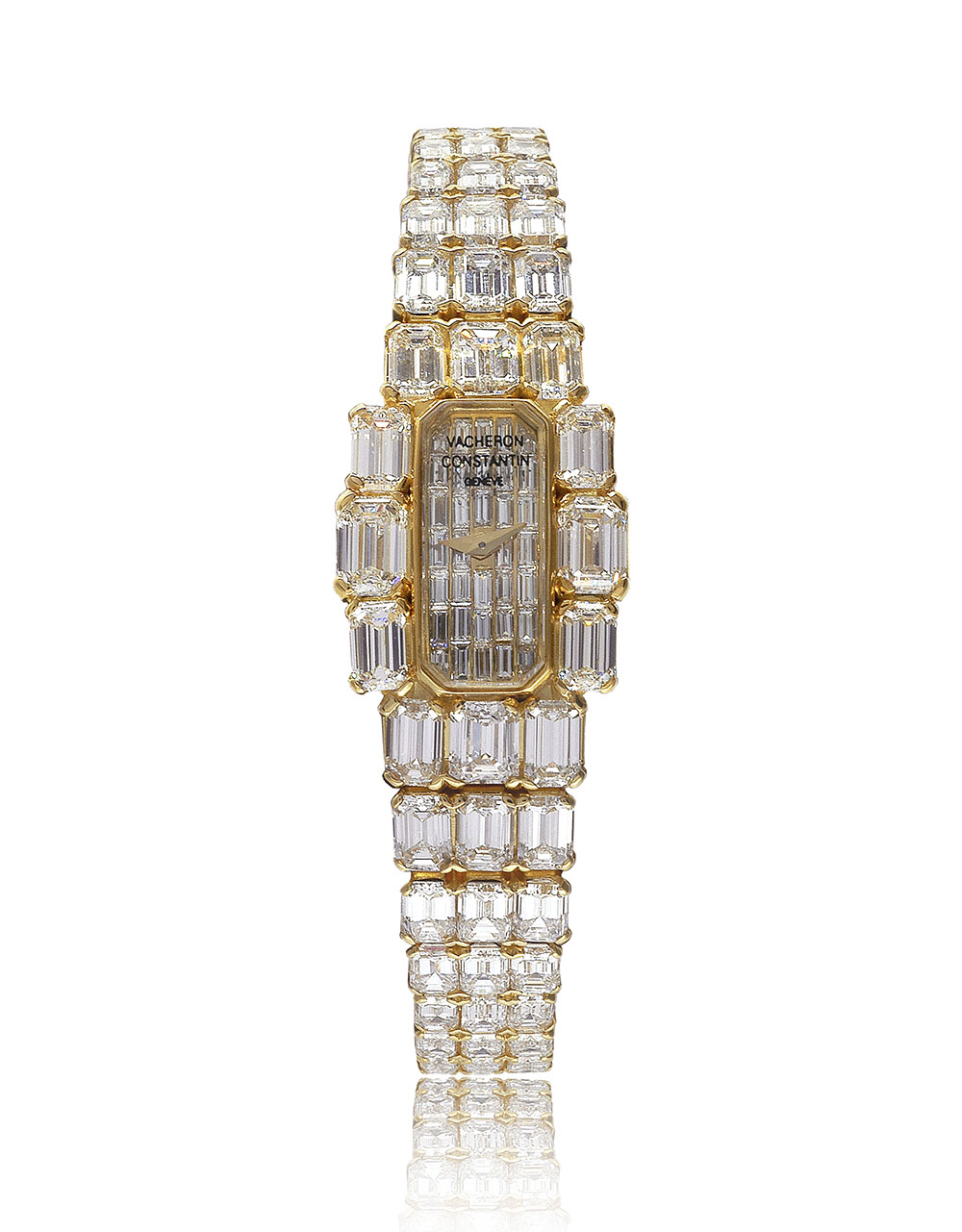
Lady Kalla, dotato di un movimento meccanico a carica manuale di tipo baguette con 17 rubini che batte a 19.800 alternanze all’ora, è un orologio gioiello scolpito in un blocco d’oro giallo, e impreziosito da più di 120 diamanti bianchi taglio smeraldo selezionati per purezza, tonalità e proporzioni. Il quadrante presenta 15 diamanti taglio smeraldo. Come tutti i movimenti Vacheron Constantin, si distingue per l’elegante motivo Côtes de Genève. La corona è posizionata sotto il movimento per mettere in risalto la lucentezza e la brillantezza delle pietre preziose.
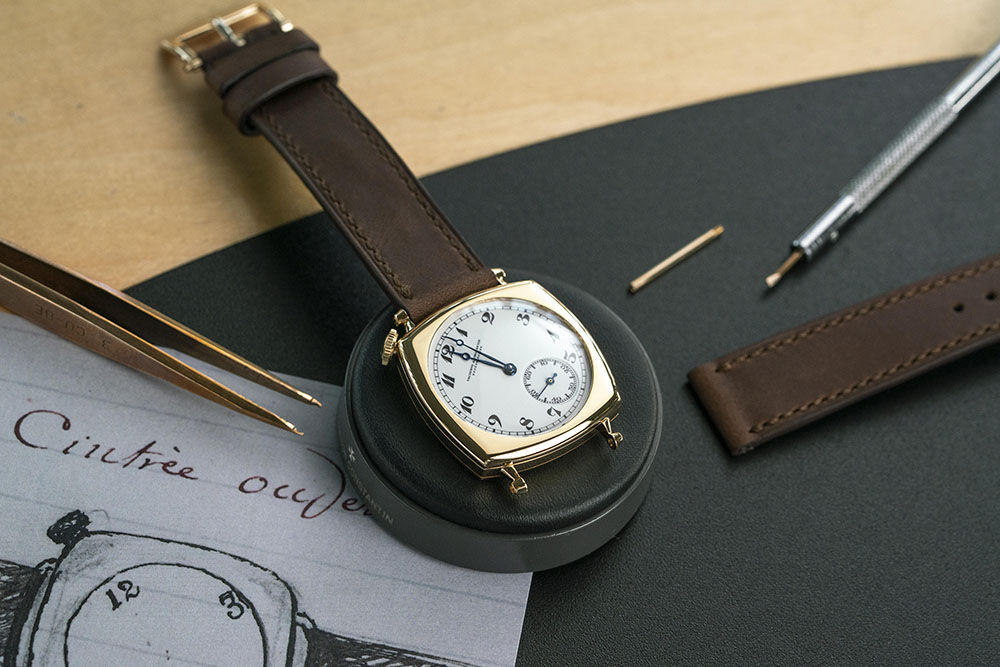
È un modello unico l’American 1921 – 2021 con la cassa in oro di 40 mm che incornicia un quadrante decentrato, argentato con cifre arabe, minuteria “chemin de fer”, sottili lancette tipo Breguet in oro e una lancetta a bastone sul contatore dei secondi, il tutto di colore nero. La corona è audacemente posizionata a ore 11. Questo modello American 1921 riprende i codici estetici delineati un secolo fa nei laboratori Vacheron Constantin. Visibile attraverso il fondello in vetro zaffiro, il Calibro Vacheron Constantin 4400 AS a carica manuale è decentrato di 45° rispetto all’asse normale.
Vacheron Constantin and the Louvre renew artistic and cultural collaboration on the occasion of the third edition of the Biennale Homo Faber
“The Journey of Life,” a major showcase on the art of restoration in venice
Generations of master watchmakers have alternated in the nearly 270 years of activity, loading the world’s oldest watchmaking Manufacture with knowledge and stylistic refinement of the precious heritage that today sees Vacheron Constantin and Louvre – co-equal institutions founded in the 18th century – united in the continuation of an artistic collaboration that began in 2019 and underscores their passion and respect for art and culture. The occasion is the third edition of the Biennale Homo Faber (Sept. 1-Sept. 30, 2024), a celebration of contemporary craftsmanship in Venice (curated by Michelangelo Foundation For Creativity & Craftsmanship, a nonprofit institution that supports artisans in order to promote a more sustainable, inclusive and humane future), underway in Venice at the Giorgio Cini Foundation (on the Island of San Giorgio Maggiore in Venice). The theme is “The Journey of Life” for this showcase on the art of restoration. Art direction by Luca Guadagnino and Nicolò Rosmarini.
Restorers from the Louvre Museum’s cabinetmaking workshop will present the work done on an oak case with mahogany veneer and gilded bronze appliqué decoration from 1822, made by the famous cabinetmaker Jacob-Desmalter destined for the royal jewels and collectibles that belonged to Marie-Antoinette, in the Louvre’s Hall of Jewels. They will be joined by Vacheron Constantin watchmakers illustrating the restoration work of the period watches. The station and display cases feature timepieces from Vacheron Constantin’s private collection, such as the 1985 Lady Kalla jewel watch, a 1908 pocket watch, and three Historiques American 1921 watches, including a unique model repurposed in 2021 created with period tools and watchmaking techniques.
Since Vacheron Constantin creates watches capable of spanning the centuries, it has a deep respect for the art of restoration by committing itself to preserving all timepieces produced since its origins in 1755, even the oldest ones – it is important for the Manufacture to ensure that restored models retain their original characteristics, therefore, has a large stock of original components that, in case of exhaustion, will be reproduced by the watchmakers in the restoration workshops using the vintage machines, according to the historical technical data sheets (plans, diagrams and instructions for use) kept in the archives of the Heritage department, guardian of each and every Vacheron Constantin creation.
Before wristwatches, women preferred pendant watches, an example being the 1908 jeweled watch with a guilloché case inlaid with platinum decorations and embellished with translucent teal enamel, applied using the flinqué technique, and rose-cut diamonds. Surmounted by a yellow gold arch, this composition is decorated according to the Art Nouveau aesthetic that favored nature-inspired motifs. The silver-plated dial features a center with black Arabic numerals and a “chemin de fer” minute track.
Lady Kalla, equipped with a baguette-type hand-wound mechanical movement with 17 rubies beating at 19,800 vibrations per hour, is a jeweled timepiece carved from a block of yellow gold, and embellished with more than 120 emerald-cut white diamonds selected for clarity, hue and proportions. The dial features 15 emerald-cut diamonds. Like all Vacheron Constantin movements, it is distinguished by the elegant Côtes de Genève motif. The crown is positioned below the movement to highlight the luster and brilliance of the precious stones.
The 40 mm gold case frames an off-center, silver-plated dial with Arabic numerals, “chemin de fer” minute track, slender gold Breguet-style hands, and a baton hand on the seconds counter, all in black. The crown is boldly positioned at 11 a.m. This American 1921 model echoes the aesthetic codes outlined a century ago in the Vacheron Constantin workshops. Visible through the sapphire crystal case back, the hand-wound Vacheron Constantin Caliber 4400 AS is off-center at 45° to the normal axis.

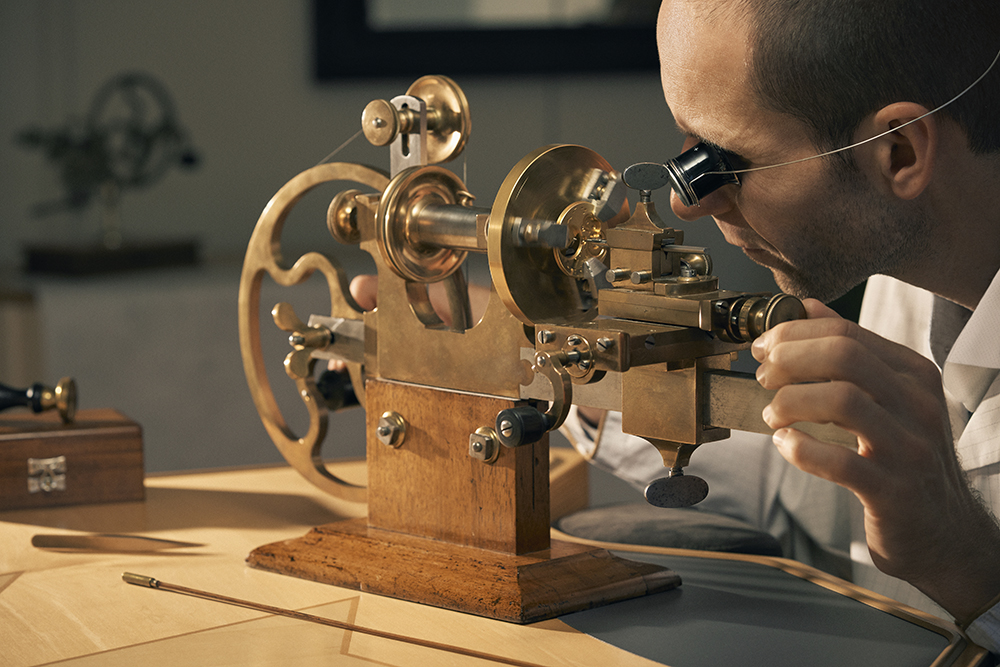
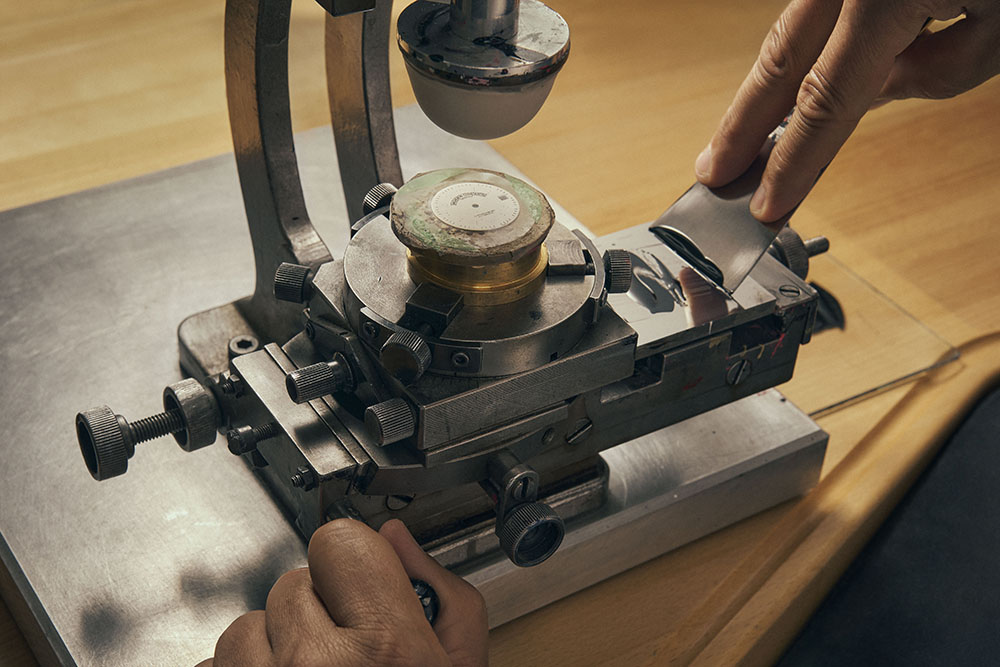
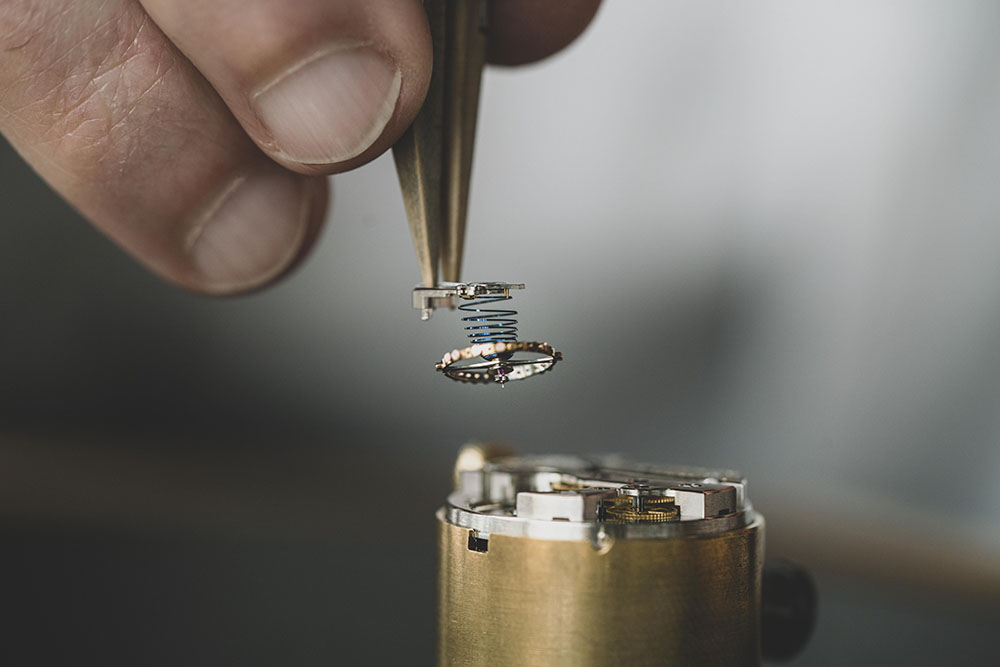
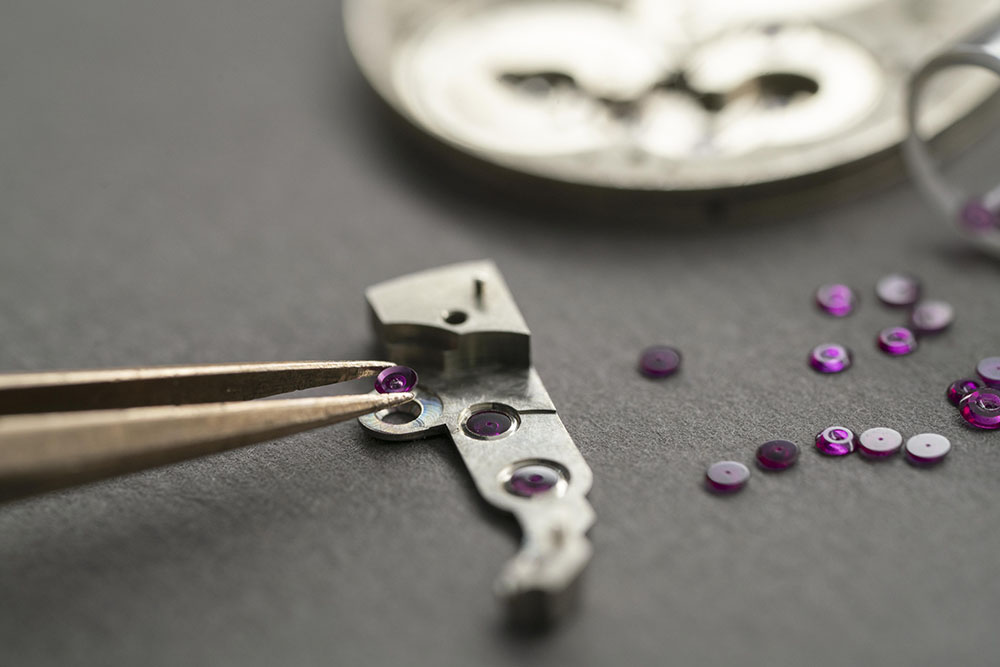
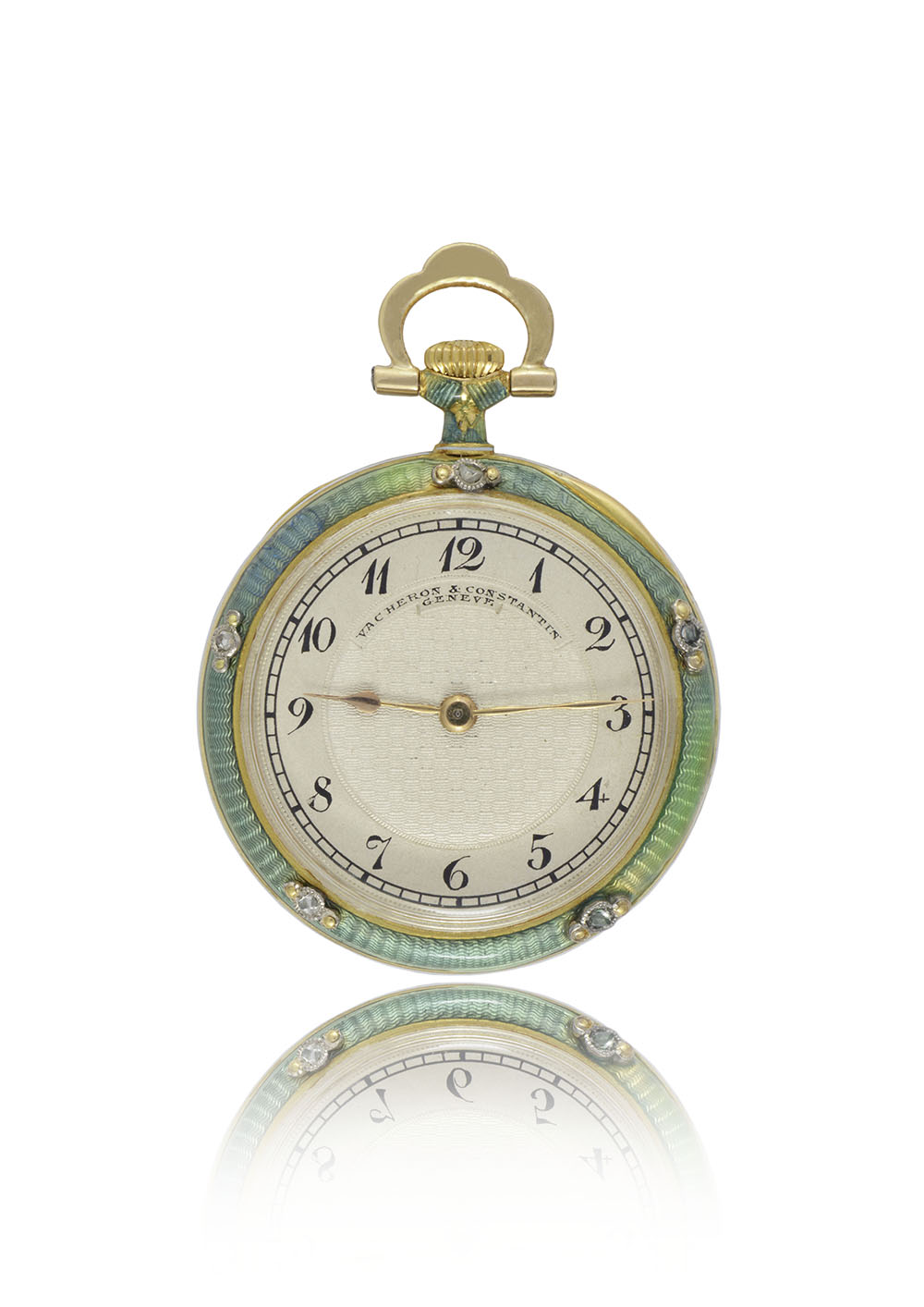
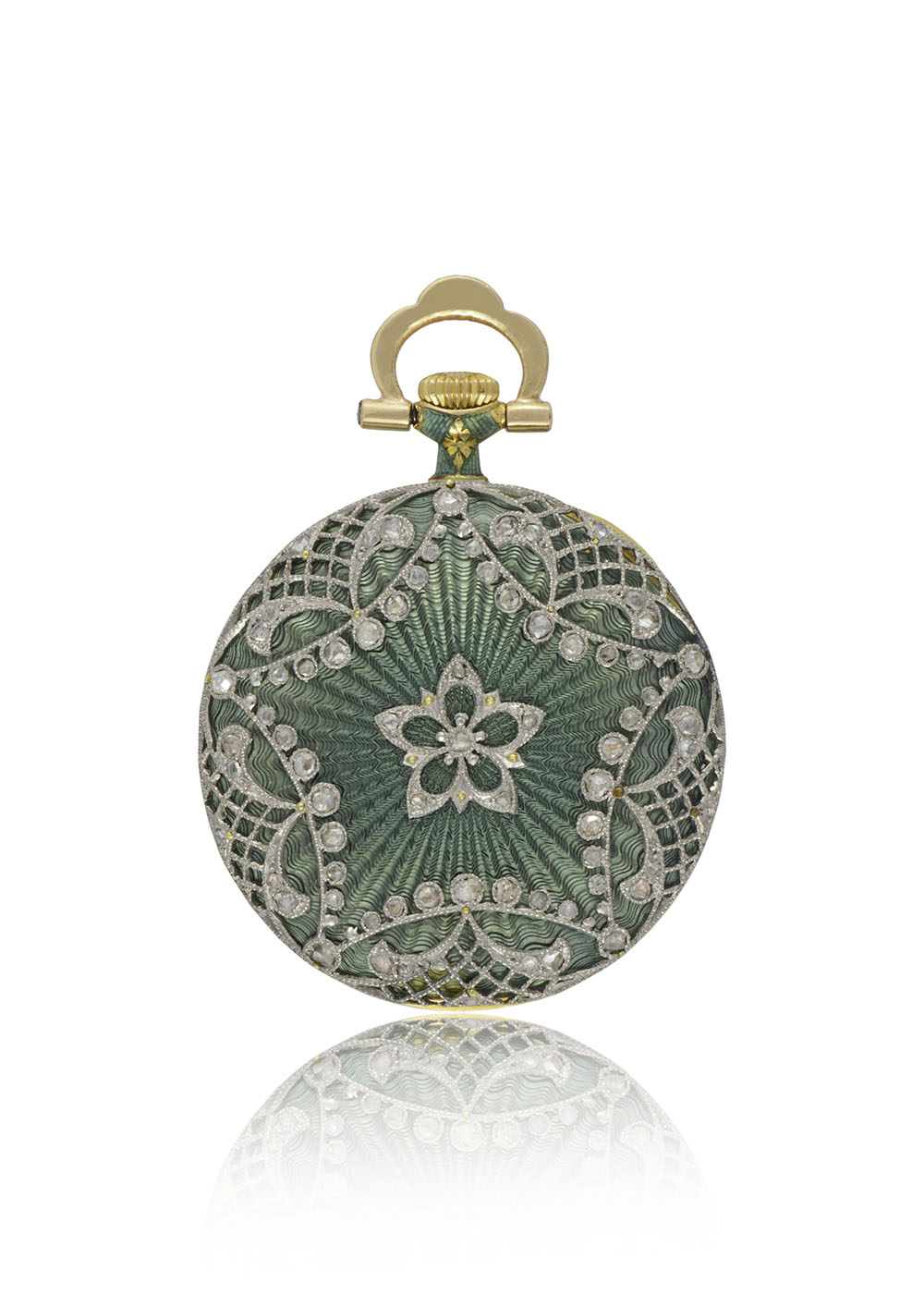
POST COMMENT
Devi essere connesso per inviare un commento.